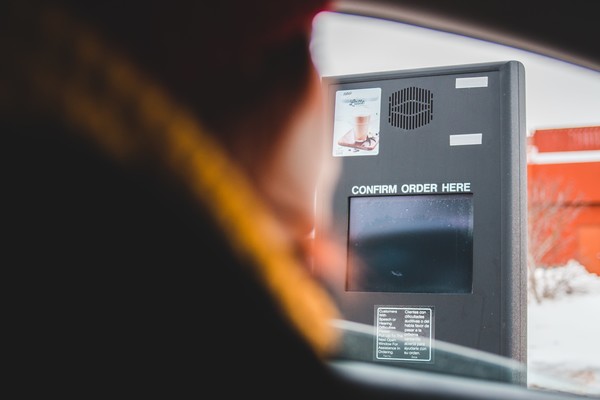How self-serving kiosks are creating barriers

UNIFORMED STAFF members are nowhere to be seen; instead, a bright, rectangular touchscreen greets customers in a cashier-free Lotteria—a fast-food franchise—in Hongdae. Unlike other Lotteria chains that support purchases through both cashiers and self-serving kiosks, customers here can only order using the latter option. With the prolonged economic recession due to COVID-19, more physical stores in Korea are beginning to implement self-serving kiosks or are shifting to cashier-free stores. The purpose of kiosks is to increase convenience; ironically, however, these newfangled devices are instead creating barriers for the elderly and the disabled.
The increase of self-serving kiosks
A self-serving kiosk is a type of interactive kiosk that enables customers to purchase products without the assistance of a cashier. A survey conducted by the Korean government revealed that around 30,000 kiosks were implemented in restaurants and stores over the past three years[1]. In addition, according to a survey conducted by JobKorea, 56.4% of business owners stated that their main reason for considering the shift toward cashier-free stores was high labor costs[2]. Due to the consistent rise in the minimum wage rate—a whopping 50% increase over the last five years—businesses find it cheaper to implement kiosks than pay their workers, even if it costs around ₩5 million to purchase an interactive kiosk[3].
How kiosks pose barriers to the elderly and disabled
For elderly and even middle-aged individuals who are relatively unfamiliar with advanced technology, an interactive kiosk is a challenging device to learn to use. In a survey conducted this year by the Seoul Digital Foundation, the two main reasons why people over age 55 did not prefer using kiosks were that they did not know how to use them and often felt sorry for the people standing behind them in line, as they took longer navigating through kiosks. In the case of disabled individuals—specifically the visually impaired—touchscreen-based kiosks are impossible to use. Moreover, the voice-guidance function in most kiosks does not read the menus out loud, failing to provide a solution for those who cannot see the screen[4].
In order to instruct the elderly on how to use kiosks, some welfare centers in Korea have opened up kiosk education programs for free. However, such programs have shown to be less successful than expected. For example, many of these programs recruit elders through online applications. Considering that these applicants are unfamiliar with using new technological devices to begin with, online applications are an ineffective recruitment method. Another problem has to do with the lack of unity among kiosk manuals, as different types of kiosk software have varying formats and functions. Thus, even if welfare centers educate the elderly on using a kiosk, it is likely that they would continue to experience difficulties when using kiosks with different layouts.
To address the challenges faced by the blind, kiosks with braille pads were developed in 2020. However, according to a 2022 investigation, only one out of 1,002 kiosks was designed to be barrier-free for the visually impaired[5]. Such unsuccessful attempts at addressing problems created by kiosks reveal that both the public and the government still have a long way to go in terms of achieving a barrier-free society.
Possible solutions
On July 11, the Seoul city government announced the “Accompanying the Vulnerable” campaign to support digitally illiterate elders and disabled individuals[7]. The plan includes developing kiosks with larger fonts and easier terms, creating on-site practice programs, and dispatching 100 digital guides. “Digital guides” are people who visit places with statistically high elderly populations, such as Dongmyo station, and assist them with using kiosks among other digital devices. The government is also planning to expand this campaign by the end of the year, encouraging the public to be more understanding and patient when digitally illiterate customers are using kiosks.
Even though this plan is more focused on assisting the elderly than the disabled, it is nevertheless a step taken towards lowering the barriers that kiosks pose. As for the problems faced by the visually impaired, the government should incentivize business owners to purchase braille kiosks by offering them partial financial support when doing so. More importantly, however, it is imperative that we challenge Seoul’s palli-palli culture[8], which encourages impatience among individuals—especially those waiting behind in line. As with most social issues, the key to reducing inconveniences caused by kiosks seem to lie within the conjoined efforts of the public; being considerate of socially marginalized customers—even if it is something as little as offering people to take their time at the kiosks—will help them feel more at-ease in this ultra-digitized day and age.
[1] HanKyung
[2] Seoul Economics
[3] Daejon Ilbo
[4] The Kyunghyang Shinmun
[5] Newsis
[6] Edaily
[7] Donga Ilbo
[8] Palli-palli culture: The concept of living a fast-paced lifestyle to achieve maximum efficiency

